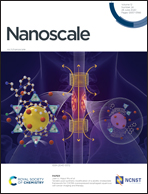Lewis-base containing spiro type hole transporting materials for high-performance perovskite solar cells with efficiency approaching 20%†
Abstract
Owing to excellent performance and dopability, spiro-OMeTAD remains an irreplaceable hole transporting material (HTM) in perovskite solar cells (PSCs). In order to further improve the performance of spiro-OMeTAD based PSCs, a Lewis base can be introduced into the structure of spiro-OMeTAD wisely, which can keep the advantages of spiro-OMeTAD while incorporating the functionality of a Lewis base in passivating the surface of the perovskite. Therefore, spiro-type HTMs (spiro-CN-OMeTAD with a dicyano group and spiro-PS-OMeTAD with a thiocarbonyl group) were synthesized and confirmed by density functional theory (DFT) calculations and X-ray single-crystallographic diffraction. Spiro-CN-OMeTAD as an HTM is certified to have a suitable interfacial band alignment with the perovskite, good film quality and effective defect passivation, which facilitate the resulting device to achieve an efficiency of 19.90% with a high open-circuit voltage, low hysteresis, and improved stability. This study provides an alternative strategy for the molecular design of better HTMs in high-performance PSCs.

- This article is part of the themed collection: Celebrating 60 years of the Fujian Institute of Research on the Structure of Matter


 Please wait while we load your content...
Please wait while we load your content...